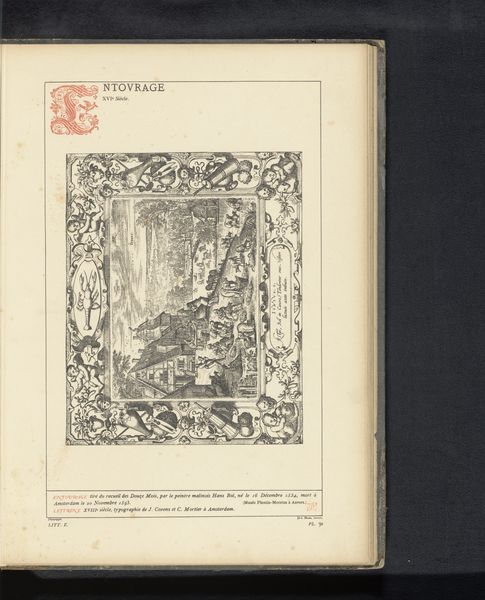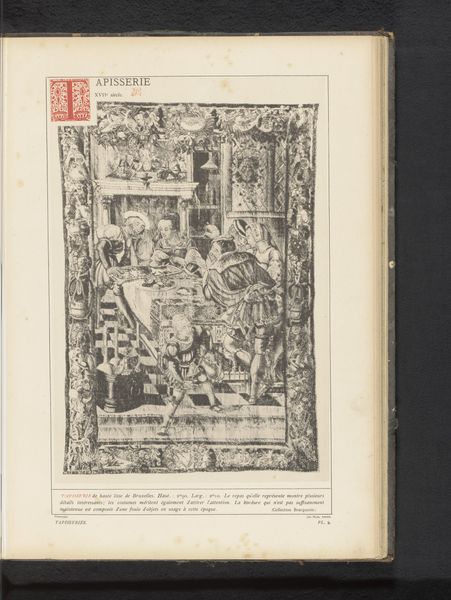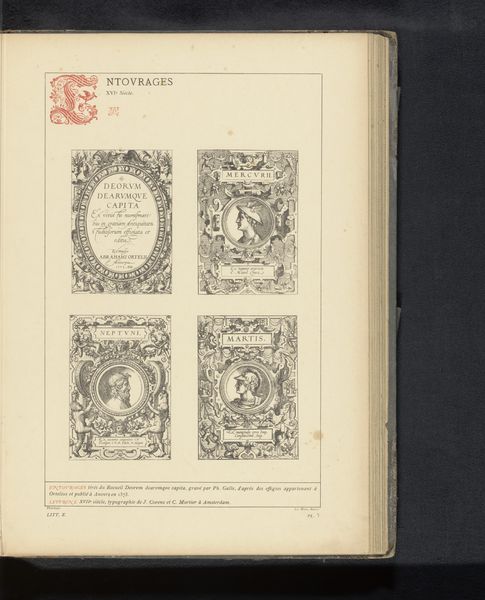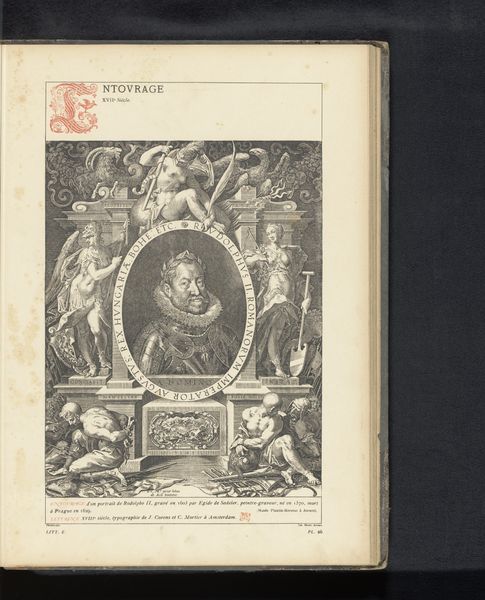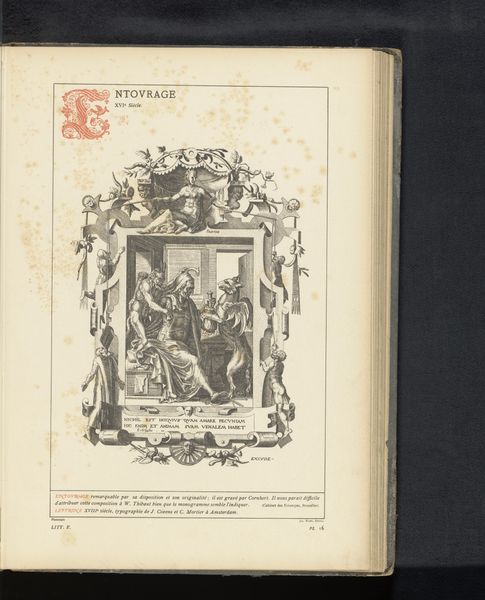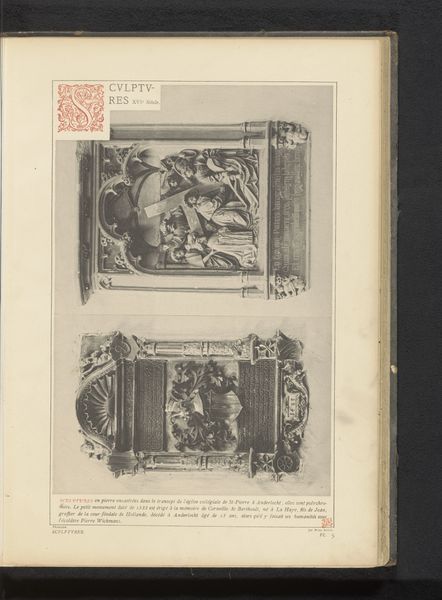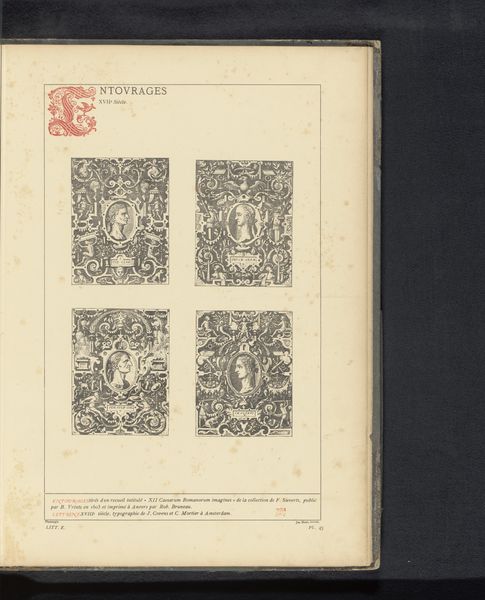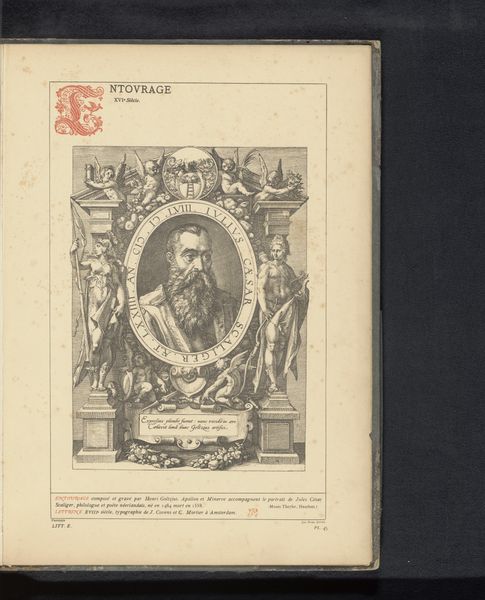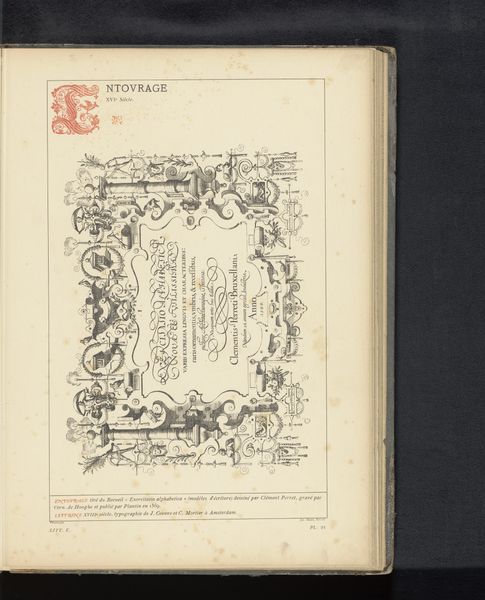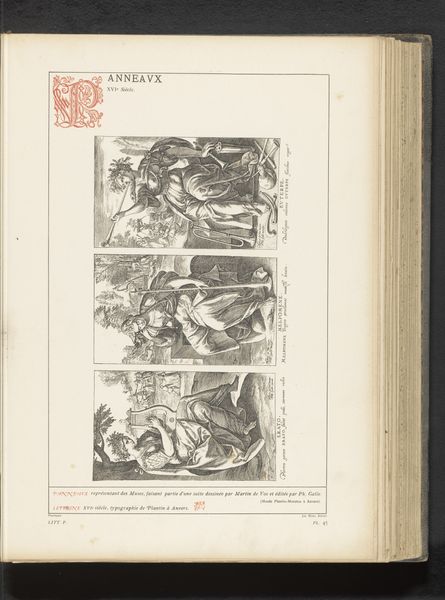
Reproductie van een prent van de dood van Maria door Johannes Sadeler naar Maerten de Vos before 1880
0:00
0:00
print, paper, engraving
#
medieval
# print
#
paper
#
engraving
Dimensions: height 254 mm, width 191 mm
Copyright: Rijks Museum: Open Domain
Curator: This artwork presents a reproduction of an engraving dating from before 1880, depicting "The Death of Mary." It's attributed to Johannes Sadeler, after Maerten de Vos. Editor: The dense, dark lines and compact composition immediately strike me. It feels intensely somber and detailed. I am curious about its social purpose. Curator: From a formal perspective, notice how Sadeler utilizes contrasting tones to create depth within a relatively flat plane. The almost overwhelming ornamentation of floral motifs framing the scene directs the eye toward the central figures clustered around the Virgin. The use of line and form is meant to emphasize certain figures over others, giving more detail and light to those considered central, but it may distract viewers from fully engaging with secondary figures or from observing the details around the Virgin. Editor: I agree, the emphasis creates an iconic focal point, but I’m more interested in the material processes involved in creating this reproduction. Engravings required meticulous skill, and reproducing such a piece would have been a labor-intensive endeavor, reflective of both technical expertise and broader economic networks within the printing industry at that time. What would be its availability to audiences, given the resources involved in creating it? What was the status of Sadeler himself? Curator: Certainly, there are layers to unpack in how this reproduction served a didactic purpose, and these processes matter as well. Sadeler's mastery of the burin is clear in the way the light seems to emanate from the scene—there is a subtle radiance at work—and consider too, that in an age before photographic reproduction, prints such as this helped circulate visual ideas related to spirituality. There is great power in that replicability of religious scenes. Editor: Yes, and that very circulation has social and political significance. Were they reaching only elite patrons? I find the material conditions and means of distributing these works just as compelling as its stylistic qualities and iconographic impact. What class did the laborers come from? How were they trained? The art and social value lie inextricably within these historical details of its creation. Curator: I acknowledge the value of material concerns; but in studying the history of this engraving’s forms, it is tempting to further investigate its aesthetic conversation between reproduction and original works. There is beauty to be found, too, in exploring the language of visual representation. Editor: Perhaps, and regardless of one's personal values, one has to reflect upon the cultural weight of materials to get the whole picture. Curator: Precisely, both analyses allow us new perspective on historical printmaking, even from a reproduction as seemingly straightforward as this one.
Comments
No comments
Be the first to comment and join the conversation on the ultimate creative platform.
